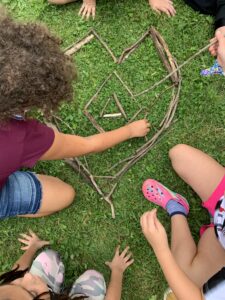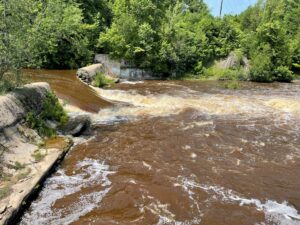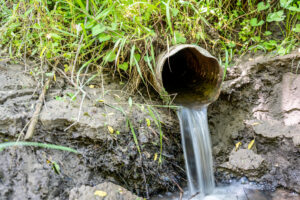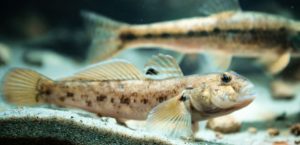-
Environmental Stewardship Through Art
By James Brangan Art inspires appreciation, which spurs understanding that leads to positive action. In 2019, the Lake Champlain Basin Program (LCBP) established an Artist-in- Residence (AiR) grant program to…
-
Dam Removal Advances Atlantic Salmon Restoration in Lake Champlain Basin
Two dams that stand between Atlantic salmon and upstream spawning habitat on the Saranac River in New York are coming down, the culmination of years of collaboration among the U.S….
-
Beneath the Surface
By Matthew C. H. Vaughan In forested watersheds, we are accustomed to seeing tranquil headwater streams and cascading rivers flow through the trees. In cities, gutters and storm drains replace…
-
Lake Champlain Basin Program Seeks Reviewer for Clean Water Accounting Methods
The Lake Champlain Basin Program (LCBP), in coordination with NEIWPCC, has issued a Request for Proposals (RFP), seeking an external reviewer to inspect the clean water accounting methods used by…
-
Knocking on Lake Champlain’s Door: The Round Goby
First found in the St. Clair River in Michigan in 1990, the round goby (Neogobius melanostomus) took five years to colonize all five Great Lakes. With the highly invasive fish…
-
Animated Website Aims at Reducing Phosphorus Pollution in Lake Champlain
The Lake Champlain Basin Program (LCBP) recently launched a website dedicated to simplifying the lake’s phosphorus reduction plan. The site — Clean Water Commitment — takes a unique approach to…
-
Achieving Water Quality Standards Through Collaboration and Problem-Solving
NEIWPCC Commissioner Pete LaFlamme Shares His Perspectives From protecting Lake Champlain to managing biosolids: In this new video, commissioner Pete LaFlamme praises NEIWPCC staff for their collaborative efforts across the…
-
A Regional Approach to Hydrilla Management
While Lake Champlain is host to 51 known nonnative and invasive aquatic species, Hydrilla verticillata has not yet been found in Lake Champlain – and there’s a multi-state effort to…
-
A New Approach to Stream Health in the Lake Champlain Basin
Meet Stream Wise: a new program that works to bring neighbors together to protect and restore healthy waterways across the Lake Champlain region. The goal of the program is to…
-
Updated “Opportunities for Action” to Guide Lake Champlain Management
During a lakeside event on June 3, the Lake Champlain Basin Program (LCBP) released an update to its management plan, “Opportunities for Action: An Evolving Plan for the Future of the…






